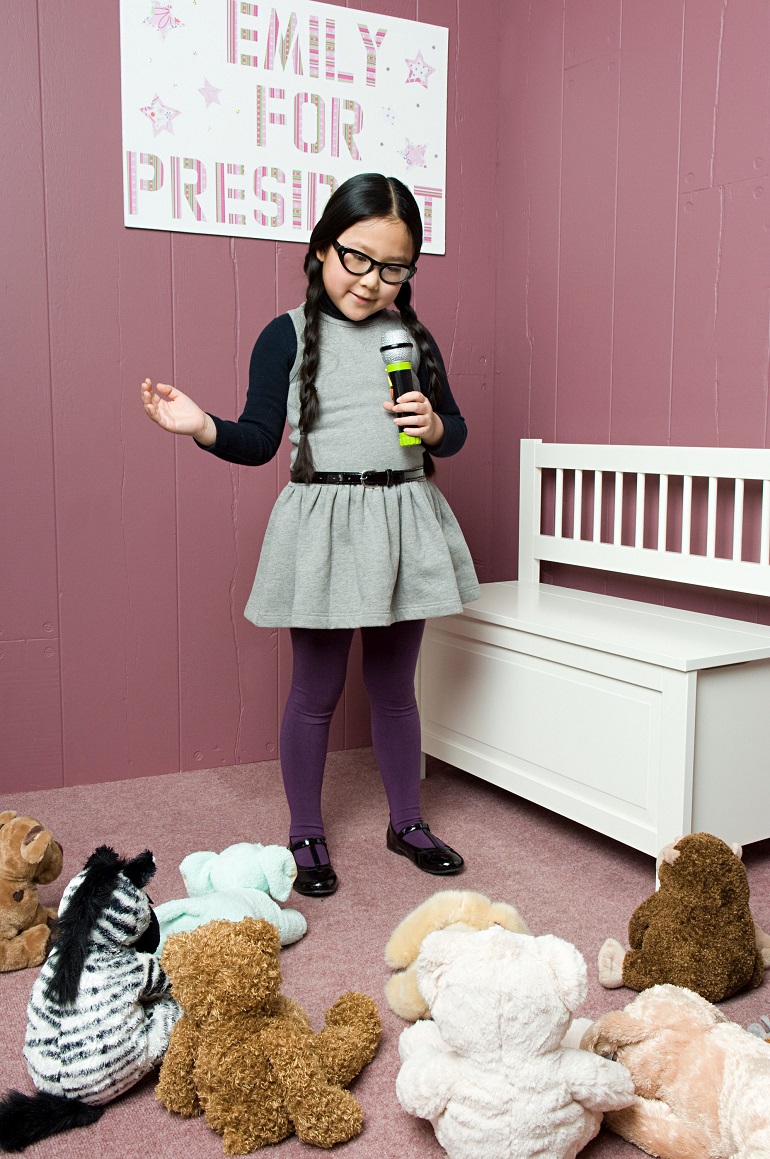As any parent who has set a place at the table for her child’s imaginary friend knows, between the ages of three and five, your child’s imagination is in overdrive. Children this age are learning to tell a story—how to string several ideas together. At three, they begin to link cause and effect, and by age five, they should be able to recount something that happened during their day, share last night’s dream—or entertain you with an explanation of how they think popcorn pops!
Living a Fantasy
The preschool years find children living in two very different worlds—those of reality and fantasy. Reality is what is around them, what they take in and what their developing brains can hold on to. Fantasy is magic, wonder, and, to the preschooler, a valid explanation for what happens in their world.
Imaginary play is a cornerstone of healthy development at this age. Children pretend to be mommies or daddies, superheroes, or animals. They know they are pretending, but they can get carried away in their stories and roles anyway. And a peer’s story can be taken up by a preschooler as her own story. Remember these things as you correct: “Yes, Cindy did come to her mommy and daddy from China, but you came on two airplanes to get here from Russia!”
Preschoolers keep one foot in each world, and slide from one to another. They know something is “pretend” one second, but the next second, it becomes “real.” Gaining the ability to shift from one world to the other is an important developmental milestone. However, a true separation of these worlds does not occur until children are in elementary school.
Storytelling
Imagination is also used to “fill in the blanks.” When a child is telling a story, and forgets what happened or does not know what happened, he will often come up with imaginary ideas. Adopted children, at this age, are often curious as to how they “got here.” Most parents are open with their children about adoption, but children often remember only pieces of what they have been told—and they might make the story more exciting by adding to it. Parents should enjoy embellishment but also provide a “corrected” version: “It would be cool if fairies had brought you to me, but let me tell you the real story.”
Preschoolers often mix stories together and add whatever they wish. For example, a child may say that he came out of his adoptive mother’s tummy. Even when he is told the real story, he may insist on wanting to have “come out of Mommy’s tummy.” Imagination empowers children—it can let them feel they share something with other kids. Anthony, a four-year-old, asked his father if he could be “half-Indian,” like his brother, who was also adopted. His father said sure, and they made up an Indian ceremony to make his transformation “official.” When that was done, Anthony asked his dad if he could now make the other half of him “cowboy.”
Parents often become concerned during these years that their child is learning to tell lies. Don’t worry—preschoolers generally do not have the developmental capacity to lie. (They may deny things they have done to avoid getting in trouble, but this is just typical preschool behavior. Who wants to get in trouble?) Enjoy your child’s stories, and gently move him closer to the truth. Most of all, try to appreciate the fact that your child is learning to be a storyteller, linking ideas together, and layering emotions into the mix. It is an exciting time!



